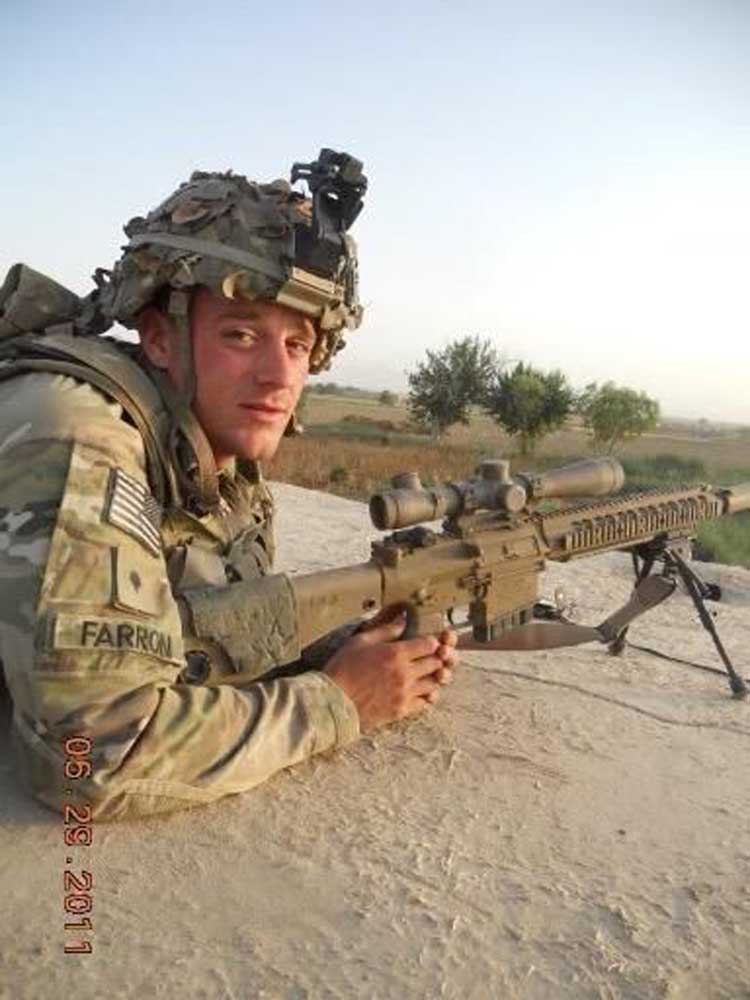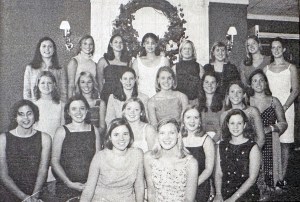Vietnam War and Afghanistan War vets become friends
Published 11:00 am Tuesday, March 29, 2022

- Army sniper Wes Farron is pictured getting in some range time during his six years in the Army. He was wounded severely in Afghanistan and now lives with his family near Talking Rock.
Just two months after being seriously wounded during a firefight in Afghanistan, Cpl. Wes Farron had orders cut from the Army to leave Brooks Army Hospital in San Antonio, Texas, and report for duty in Fort Riley, Kansas — by driving in a blizzard.
Back in Jasper, Farron’s father-in-law, Dave Lavern, mentioned his plight to Bob Reitz, a career Army officer, while they were attending Jasper United Methodist Church.
Trending
“He was going to drive from Texas to Kansas with his wife and a 10-month old kid in a blizzard, and he couldn’t even stand up straight,” Reitz said of Farron’s condition, which included damage to several internal organs due to a sniper’s bullet. “So I told Dave, let me look into that … I called the hospital (in Texas) and said, ‘Let me speak to the first military guy in charge of Wes Farron.’ (They said) ‘Who’s this?’ I said, ‘It’s Col. Reitz, don’t take too much time!’ That’s the way I was talking. Anyway, this sergeant comes on (the phone) and I said, ‘I understand Wes has got orders to Kansas in a snowstorm, and that’s ridiculous! This ain’t gonna happen! OK? So here’s what you’re going to do — you’re going to give him a 30-day delay in route, and send him to Atlanta. When his leave’s up, you can send him back to Riley.’”
Reitz, a Talking Rock resident, didn’t tell the sergeant he was a retired colonel who left the Army in 1989. But the ploy worked, and Farron got the leave time.
Farron — himself a sniper with the 1st Infantry Division, 1st Brigade, 2nd Armored of the 34th Regiment — was wounded on Oct. 10, 2011, near Kandahar.
“We had gone in to take this Taliban stronghold,” he said. “I’d just lost two of my best buddies, they both got killed in that same area. So we were pushing in there to get rid of them. We’d fight for a couple of days, stack dead bodies, get out and go to the next one. That’s how we rolled for three or four weeks.”
Farron took two rounds to the chest during an engagement.
“It was pretty bad, and the weirdest thing was it wasn’t even the worst firefight — it was nothing,” he said. “I mean, it was a big firefight, but I’ve been in eight-hour, 10-hour-long gunfights.”
Trending
Farron, 32, was unable to be med-evacked immediately because his unit was in a firefight for the compound where they were holed up. The area was too “hot,” and medical helicopters, which were not allowed to have weapons, couldn’t get gunship support.
“There’s no way they can get a vehicle convoy out there, there’s IEDs (improvised explosive devices) everywhere, there’s just no way,” he said. “I was conscious the whole time, because everybody else was at their positions fighting. (The medic) would just kind of slap me every time I was about to drift off. I said, ‘Why are you trying to keep me alive? I’m dying anyway, so let me hurry up and do it.’ Because I was miserable. I think the thing that really saved my life was because (the medic) was cool and calm and collected. We’d been in so much fighting, had so many wounded — over 250 wounded and 33 dead in a nine-month deployment — he’d got some experience.”
An hour later, Farron “flatlined” (died) twice in the helicopter, but was brought back to life by CPR. During one attempt, his sternum was broken.
“Fifty-seven minutes I laid there until they picked me up,” he said. “I put (my survival) to God and my medic, I guess.”
His wife Melanie hadn’t heard from him in three weeks, but she was notified immediately of his condition, including being in a coma for 15 days.
“I don’t think they found out everything that was wrong with me for two or three days,” he said. “They had to keep going back inside because my liver was hit, my kidney, my lung, my diaphragm, my bowel duct; I had three shattered ribs and my esophagus was hit. One bullet did all that. The second bullet went through my medic’s hand and tumbled into my armpit when they were loading me into the bird (helicopter). If it hadn’t went through his hand first … the round I got in my armpit looks like an AK round (AK-47 Russian assault rifle) because it’s sideways. I’ve had 18 surgeries since then.”
‘Meant the world to me’
Reitz, 72, served two tours in Vietnam, first as a senior adviser to the 35th Ranger Battalion, then as an S-2 and eventually S-3 intelligence officer with the First Cavalry Division, First Brigade at Fire Base David in Cambodia. During the Tet Offensive he was attached to the 5th Ranger Group while they were fighting in Saigon and elsewhere. After Vietnam, he trained officers.
“When I taught at Fort Leavenworth (Kansas) I told the lieutenant colonels ‘You don’t have a job unless you take care of your enlisted men, because they are the salt of the Earth,’” he said. “You’ve got to train them hard, and then fight hard. That philosophy worked for me.”
Farron attempted to reenlist in the Army to help train snipers, but the idea was nixed because more wound damage was discovered.
He got training to work as a firefighter and paramedic, and also became certified as a hyperbaric oxygen chamber technician.
He is now in the poultry business. Farron and Reitz met at church around Christmas of 2011, just before Farron had to have another surgery.
“He amazes me,” Reitz said. “He was hurting but still willing to follow orders and drive from Texas to Kansas in a snowstorm. He was injured so bad Wounded Warriors built him a home to live in.”
Farron noted of Reitz, “Everybody knows him — he’s networked. Anytime I’ve needed something, he’s there, he knows what to do.
“He’s still a pain, though,” Reitz smiled and jabbed at Farron as they sat under a picnic shelter at River Park in Ellijay.
“We have a beer or go out and shoot stuff,” Farron said of their time together. “We don’t really get emotional. There’s certain things I have to live with. When the doctors repaired me they told me I’d get 10 years out of my right kidney where I got hit before they’d have to pull it (and replace it). But I’m going on 12 years now with it.”
He also has internal tract issues from the bullet that causes nausea and makes him throw up six times a day. He said churchgoers at Jasper Methodist have been very supportive.
“They have been amazing,” he said. “And when Melanie was sick recently, they were the same way, just jumped right in there. It didn’t hurt that I married into a good family.”
What about buddying up with a crusty Army officer 40 years his senior?
“Bob has meant the world to me because he’s been able to bridge gaps, within the church community and the military,” he replied. “Truly, he’s been a mentor, because when you get out (of the military) you’re kinda just on your own. He’s helped me in the VA (Veterans Affairs) system, too, because I didn’t know how any of that worked.”
Reitz, a 1961 graduate of Virginia Military Institute, has worked with the American Legion, Veterans of Foreign Wars and Purple Heart Society, helping dozens and dozens of veterans on issues such as healthcare, homelessness and drug addiction.
“As an officer in the Army, I realized early on that I didn’t have a job unless I had enlisted personnel. My job was to take care of the troops and recognize them. That’s why I do what I do,” Reitz explained. “I didn’t necessarily do the work, I just knew the people who could get it accomplished.
“When I found out about Wes, I realized there were a lot of people who had been wounded in Brooks Army Hospital, and (their staff) had to deal with all of them and Wes was just another one.”
Reitz was awarded a Silver Star, three Bronze Stars and a Purple Heart during his two tours of Vietnam.
In six years of Army service, Farron received a Purple Heart and was awarded a Bronze Star, three Army Commendation medals, a Combat Infantry Badge and Expert Rifleman Badge.
Tuesday, March 29, is National Vietnam War Veterans Day.






